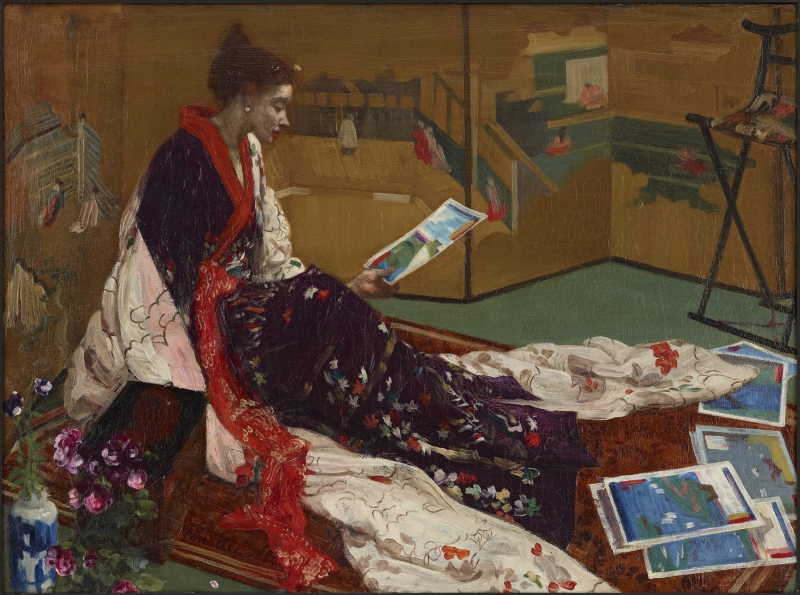Caprice in Purple and Gold: The Golden Screen is signed and dated 1864. 1 It may, however, have been completed in the following year.
1865: It was probably the work referred to by Whistler in a letter to Ignace-Henri-Jean-Théodore Fantin-Latour (1836-1904) of March 1865, 'J'ai fait encore un petit tableau Japonais qui est ravissant! Je l'enverrai chez Martinet' (that is, he planned to send it to the exhibition of the Société Nationale des Beaux-Arts, Paris). 2
It was first exhibited at the Royal Academy in 1865 (cat. no. 90) as 'The golden screen'.
Last updated: 11th October 2021 by Margaret






